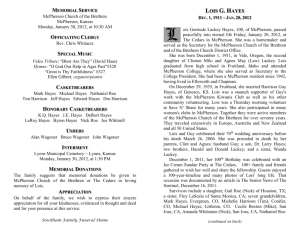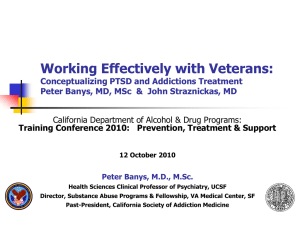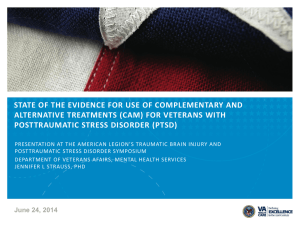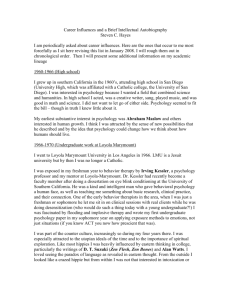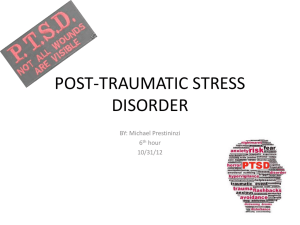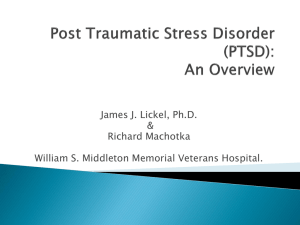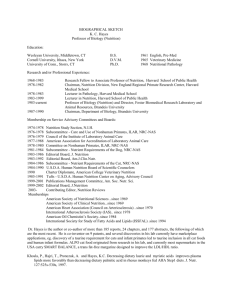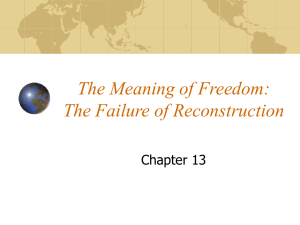Ira Hayes powerpoint
advertisement
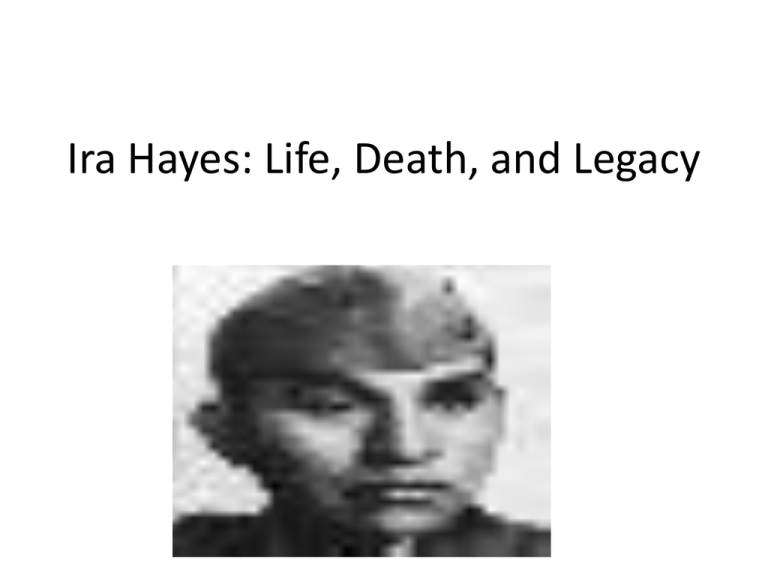
Ira Hayes: Life, Death, and Legacy Thesis Question: • Ira Hayes struggled with Post-Traumatic Stress Disorder due to his service in WWII. Unfortunately, he was undiagnosed and struggled with his trauma for years until his early death in 1955. This was during a time when Americans did little to understand or help returning war veterans with their issues stemming from war trauma. • Have the American government and the American people changed in their treatment of veterans in the years since WWII? Ira Hayes: Early Life • Born on January 12, 1923 on the Gila River Indian Reservation near Sacaton, Arizona • Family was part of the Pima Native American Tribe • Oldest of 4 children • Parents were poor cotton farmers • Sent to government boarding school as a teenager Ira Hayes: Military Service • Enlisted in the United States Marine Corps at the age of 19 • Served as a Marine Paratrooper in the Bouganville Campaign in 1943 • Unit disbanded in 1944 at which time he was assigned to the 5th Marine Division • Shipped with the 5th Marine Division to the Battle of Iwo Jima in 1945 Military Service Continued • Invasion took place on February 19th, 1945 • 5 days later, Hayes was photographed by Joe Rosenthaul in the infamous picture of the flag raising on Iwo Jima • Hayes, John Bradley, and Rene Gagnon were shipped back to the United States to raise support for the sale of war bonds PTSD: Defintion • A mental health condition which is triggered by a traumatic event. Symptoms include flashbacks, nightmares, and extreme anxiety. • Tends to lead to drug and alcohol addiction, trouble adjusting to society, anger issues, joblessness, etc. Hayes: Issues with PTSD • Hayes, Bradley, and Gagnon were toured around the country for the war bond drive • Hayes began to struggle with issues relating to combat • At this time he began to develop a serious drinking problem • In the years following the war, Hayes struggled with alcohol and was arrested 51 times in the 13 years before his death on January 24th, 1955. He was 32 years old. American response to service members with PTSD • At the time, PTSD was not a widely understood condition • Americans failed to understand and treat the issues that many veterans struggled with stemming from their war trauma • Most veterans struggled internally without help from government programs American Approach to PTSD in Today’s Society • A much better understanding of PTSD overall • Government programs specifically for war veterans including; counseling, medical care, job placement, financial aid, etc. Conclusion • Ira Hayes and his fellow veterans of WWII were made to struggle with PTSD without any aid from the American people. In the years since, there has become a greater understanding of PTSD among the American people and the American government, which has led to programs aimed specifically at veterans. I consider this as the legacy of Ira Hayes.



